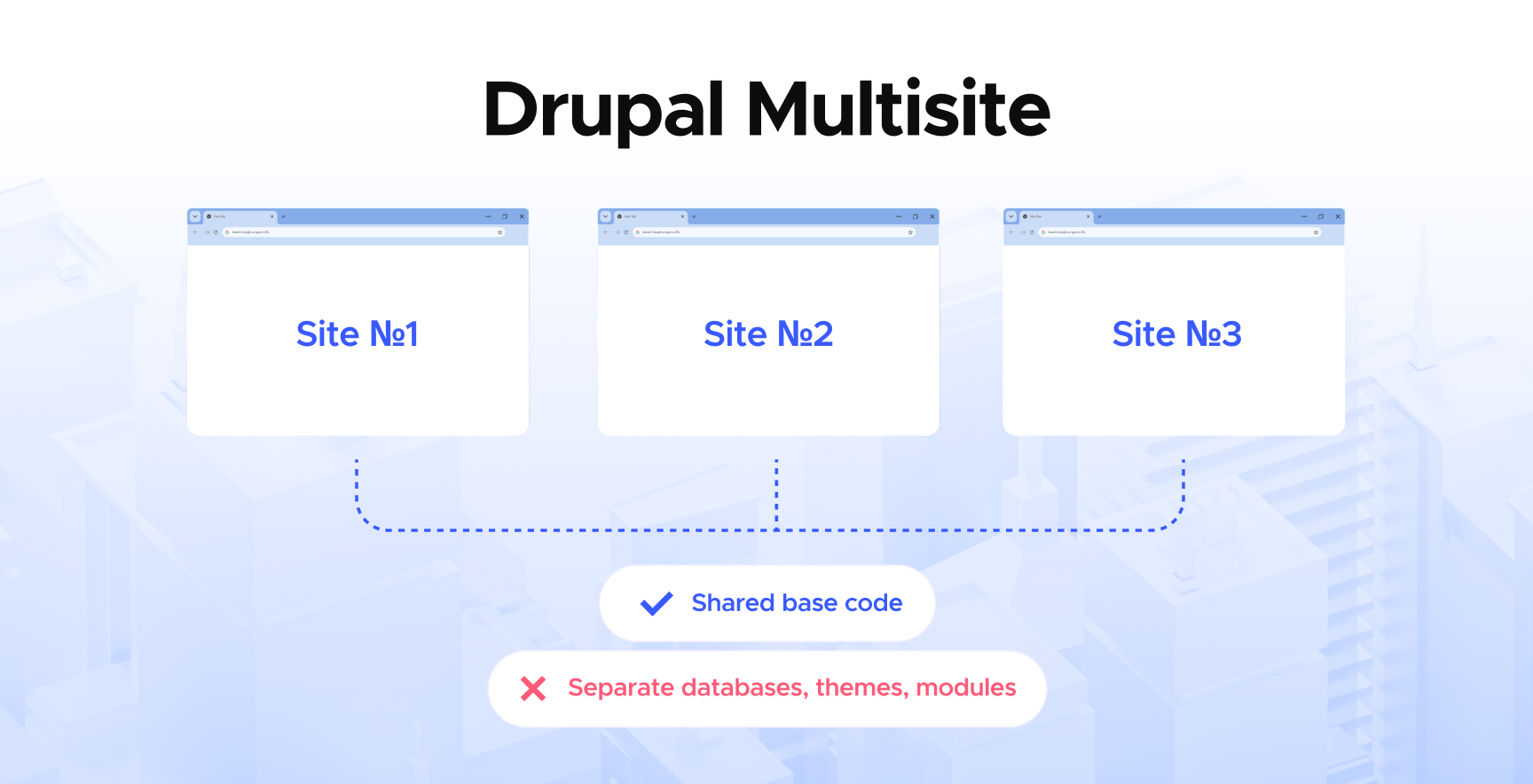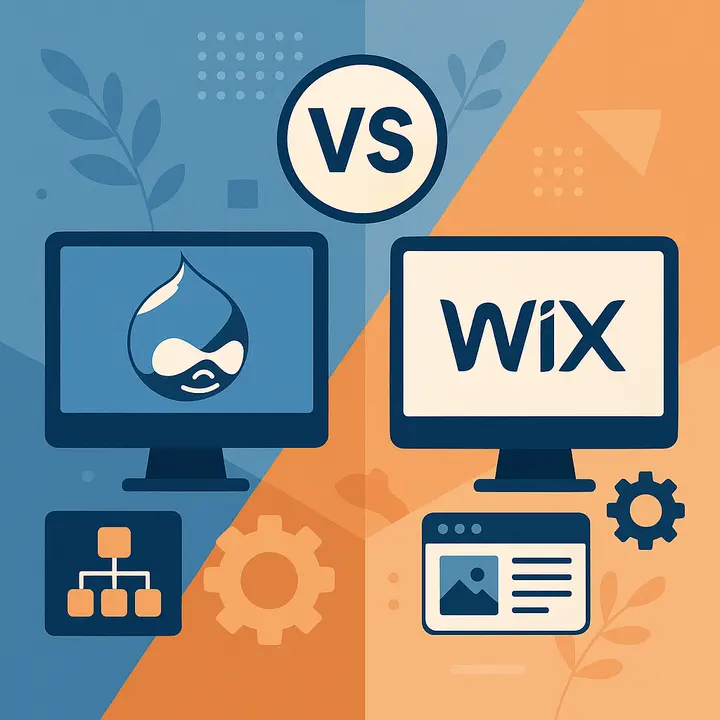Main advantages of Drupal Multisite
The multisite system in Drupal helps to save resources, quickly manage multiple websites, and easily manage all projects from one place. It is a convenient way to maintain several separate websites on a common basis without unnecessary hassle, which enables profit.

Resource saving
All sites run on a common Drupal core. That is, you do not duplicate the code each time, but simply create a new configuration for a new website. This significantly reduces the costs of hosting, support and infrastructure. Additionally, there is no need to hire a separate team for each site, as the same specialists can service all your projects simultaneously.
Sharing modules and themes
You install a module or theme once and can apply it to any of your sites. You do not need to repeat the same actions every time. This saves development time, reduces the risk of errors and provides a unified approach to functionality and design. It is especially convenient if you want to maintain the same interface or set of features on all company sites.
Centralized management
Instead of managing each site separately, you have a single control centre for the entire network. This simplifies control over updates, access rights, security, backups and DevOps processes. Everything is updated from a single source, which means stability, speed, and reduced human error.
Rapid launch of new sites
Do you need another site? You don’t need to start from scratch, but you can simply duplicate the structure and settings of an existing one. A new site can be deployed in a few minutes, even without involving a developer. This opens up new opportunities for experiments, seasonal campaigns or launching sites for new markets.
Unified user experience
When each site has the same design, logic and UX/UI approach, visitors feel a single system. This is important for brands that want to look professional and consistent. Your customer doesn’t get lost, even if they move between different sites in your ecosystem.
Domain & scalability
A multisite system is ready to grow with your business. Add new sites for new brands, countries, products or campaigns, all without major architectural changes. Drupal Multisite makes an easy to reach any business goals.
Security confidence
Security is one of the strongest points of multisite. You implement updates only once, and all sites receive the latest patches. This significantly reduces the risks of vulnerabilities and data leaks. Administration is also centralized, with control over domain access module, where rights are more transparent and can be managed.






